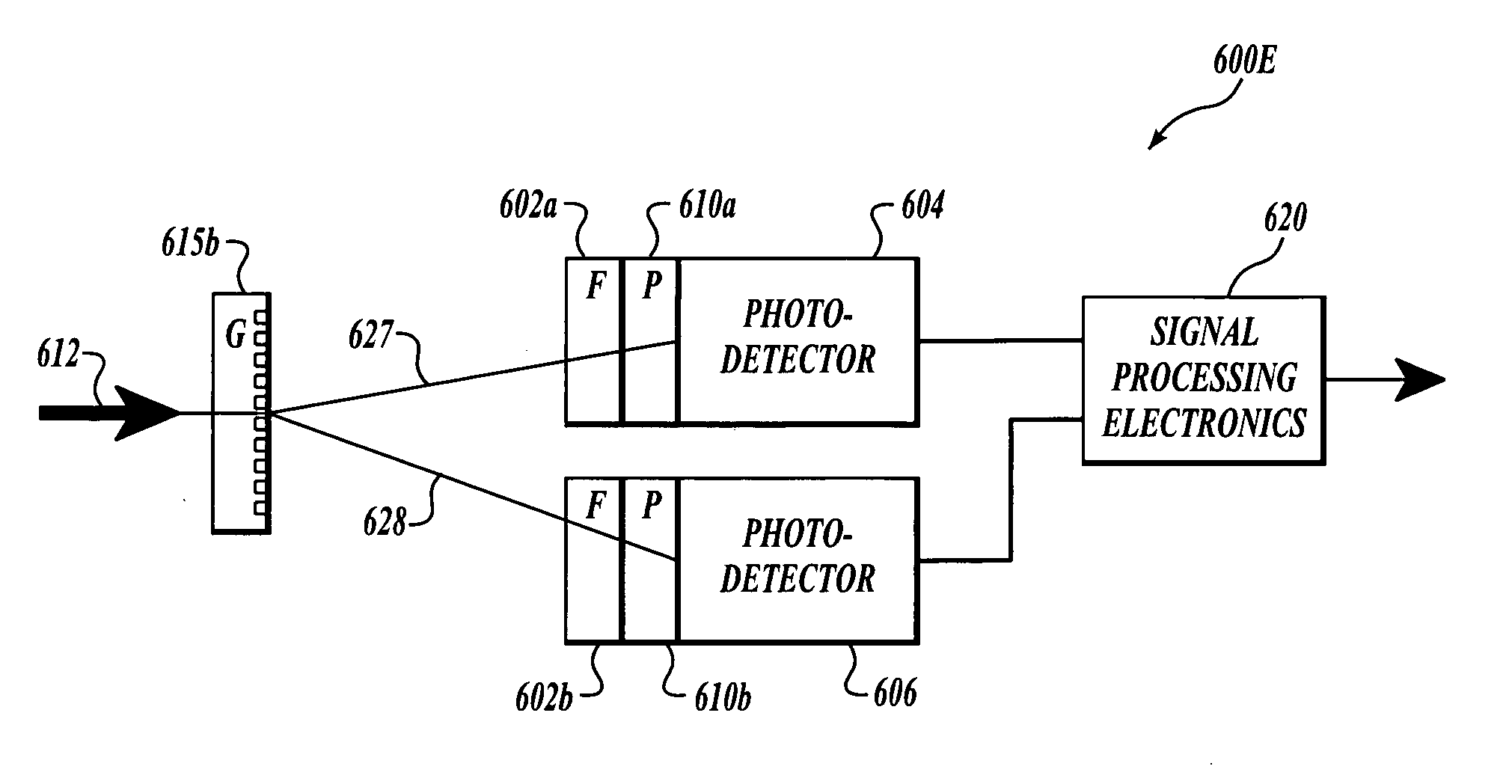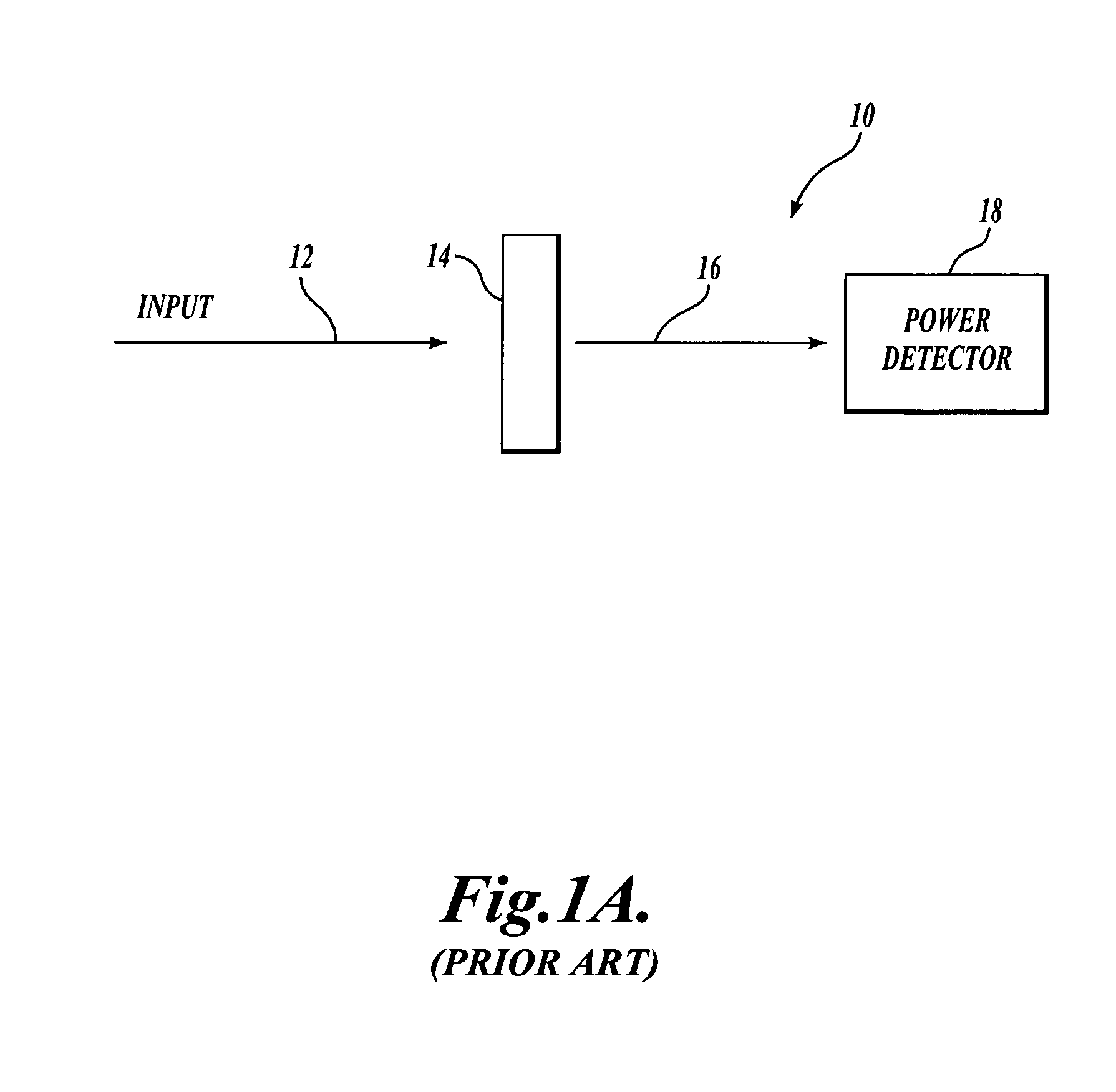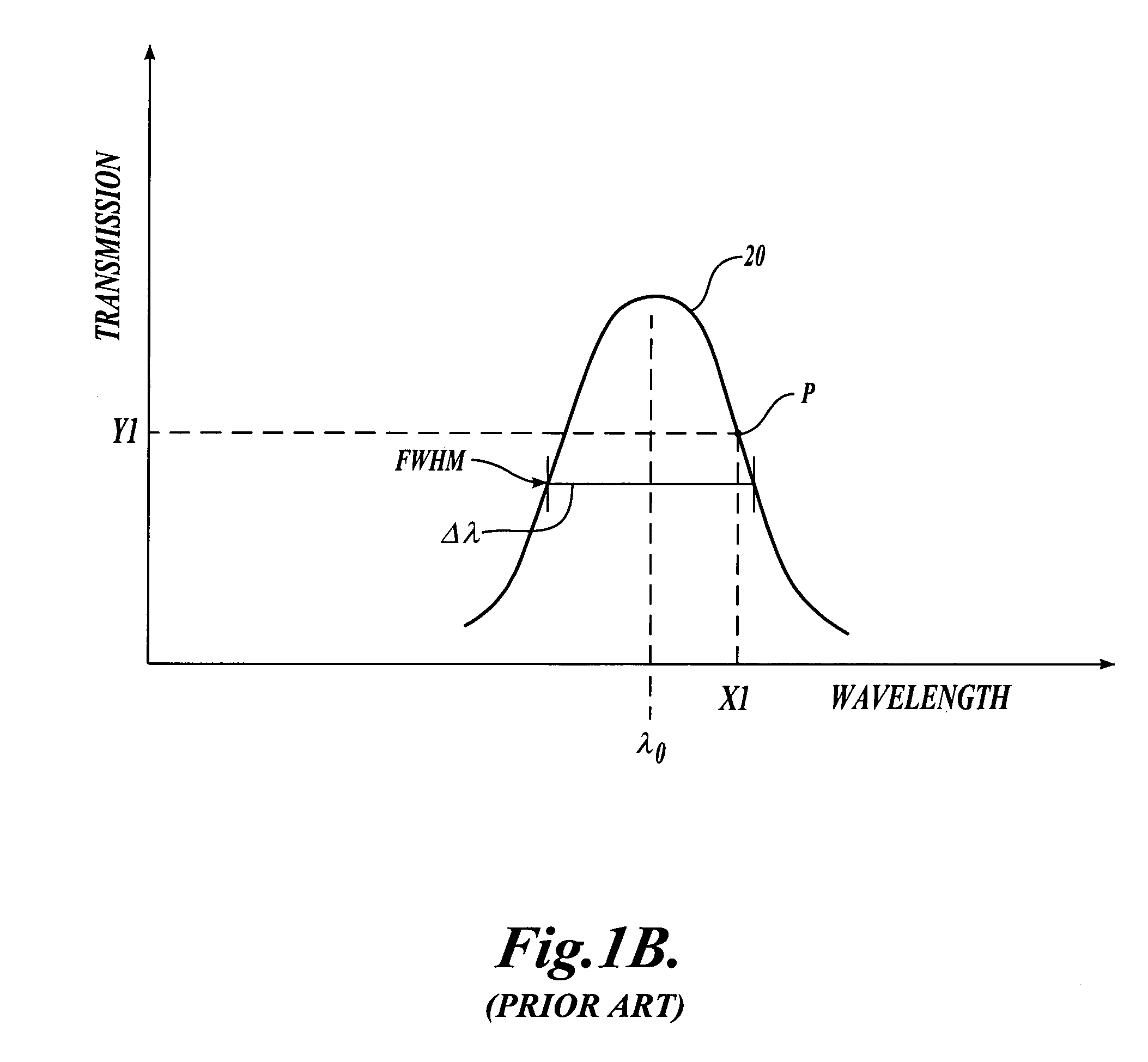Wavelength detector
a detector and wavelength technology, applied in the field of sensing devices, can solve the problems of surface polarization sensitive, system described above susceptible to errors, etc., and achieve the effects of compact and stable radiation measurement devices, reducing polarization-dependent errors, and improving the level of error reduction
- Summary
- Abstract
- Description
- Claims
- Application Information
AI Technical Summary
Benefits of technology
Problems solved by technology
Method used
Image
Examples
Embodiment Construction
[0038] In general, the proportion of incident radiation power that is transmitted by any polarization-sensitive reflective or transmissive surface, including a surface of a filter and / or a beam dividing element, is affected both by its angle of incidence and also by the polarization state of the radiation (i.e., the relationship between its P-polarized component and S-polarized component). FIG. 4 illustrates how the transmission of a light beam through an air / glass interface, with the glass having a refractive index of 1.57, varies based on an angle of incidence, and also based on the polarization state of the light beam. Transmission curves 410 and 412 correspond to incident light beams that are 100% P-polarized and 100% S-polarized, respectively. A curve 414 shows the difference in transmission between the transmission curves 410 and 412. At normal incidence (0° angle of incidence), the transmission characteristic of light is the same for both P-polarized polarized and S-polarized...
PUM
| Property | Measurement | Unit |
|---|---|---|
| angle of incidence | aaaaa | aaaaa |
| angle of incidence | aaaaa | aaaaa |
| refractive index | aaaaa | aaaaa |
Abstract
Description
Claims
Application Information
 Login to view more
Login to view more - R&D Engineer
- R&D Manager
- IP Professional
- Industry Leading Data Capabilities
- Powerful AI technology
- Patent DNA Extraction
Browse by: Latest US Patents, China's latest patents, Technical Efficacy Thesaurus, Application Domain, Technology Topic.
© 2024 PatSnap. All rights reserved.Legal|Privacy policy|Modern Slavery Act Transparency Statement|Sitemap



